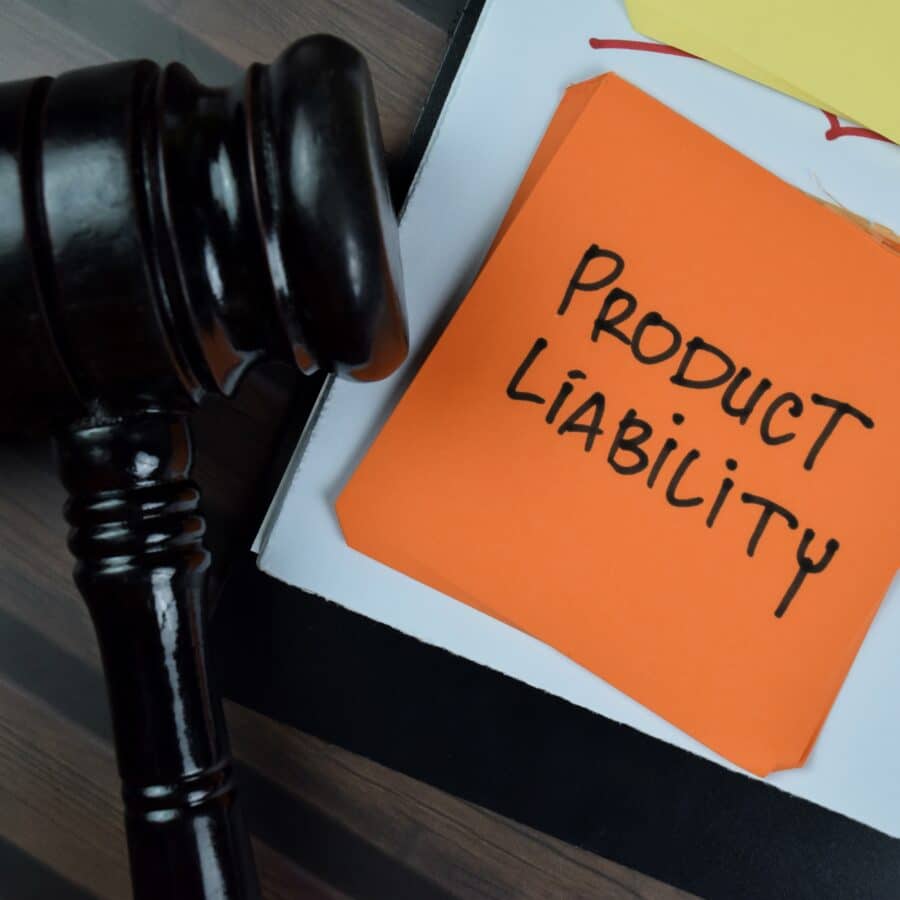In October 2015, the Florida Supreme Court announced its landmark decision in Aubin v. Union Carbide Corp., unequivocally declaring that Florida remains a Second Restatement “consumer expectations” state for products liability cases. In doing so, the Court specifically rejected the Third Restatement’s “risk-utility” test, which requires, among other things, that the plaintiff demonstrate the existence of a reasonable alternative design. The Court explained that the Third Restatement’s reasonable alternative design test was “contrary to the policy” underlying the State’s products liability doctrine—namely, that “the burden of compensating victims of unreasonably dangerous products is placed on the manufacturers, who are most able to protect against the risk of harm, and not on the consumer injured by the product.”
One would think that Aubin would have settled this matter once and for all. Floridians are not to be burdened by a reasonable alternative design requirement in products liability cases. Sadly, that’s not the case. A recent proposal to the State’s jury instructions seeks to smuggle that very same test back into products liability trials. This time it comes under the guise of the “unavoidably unsafe product” defense from comment k of the Second Restatement of Torts. While this proposal appropriates the comment k label, in substance it is nothing more than the Third Restatement test rejected in Aubin.
This came up once before—back in September 2016. At that time, we wrote about the problematic proposal on our website, and submitted a thorough opposition to the Committee on Civil Jury Instructions. The issue then laid dormant, only to reappear in recent weeks as the Committee proposed a revised version of the same instruction.
Today, the attorneys at Newsome Melton submitted comments against the revised proposal to the Committee. In the interest of public awareness, I am posting my comment in full below. We will continue to monitor this situation and report back with updates as they unfold.
WCO Jury Instruction Comment
WCO Jury Instruction Comment (June 15 2018)
VIA E-MAIL Laura Whitmore Chair, SJIC (Civil) lwhitemore@shb.com CC: sjicivil@flcourts.org; htelfer@floridabar.org
Re: Comment on Proposed Instruction 403.18(b)
Dear Ms. Whitmore,
I am writing to voice my strong opposition to Proposed Instruction 403.18(b), entitled “Unavoidably Unsafe Products.” Respectfully, this instruction does not accurately reflect Florida law. Even worse, it would close the courthouse doors to many Floridians by saddling them with an onerous burden that does not exist under Florida law (one that was specifically rejected by the Florida Supreme Court), and would create undue confusion for Florida’s trial and appellate courts.
Comment k—which provides immunity against strict products liability design defect claims for products which are “unavoidably unsafe” yet vital to society—certainly has its place in Florida jurisprudence. However, that place is very narrow (i.e., cutting edge pharmaceutical drugs, vaccines, and the like). It’s unclear why we even need a pattern instruction on such a unique and rare defense. And, to the extent such an instruction is warranted, the proposal fails this objective as it simply adopts and applies the Third Restatement’s design defect test, and avoids any reference to or mention of the actual purpose, requirements, and limitations of comment k.
I. The Proposal Fails to Apply Comment K and Instead Applies the Third Restatement Design Defect Test that Has Been Rejected by the Florida Supreme Court
At a fundamental level, the proposal fails to do what it purportedly sets out to do: provide an instruction for the application of comment k from the Second Restatement. Instead, the instruction is nothing more than a recitation of the “risk-utility/reasonable alternative design” defect standard from the Third Restatement of Torts. This, of course, is the same exact standard that was expressly rejected by the Florida Supreme Court in Aubin v. Union Carbide Corp., 177 So. 3d 489 (Fla. 2015). As will be addressed below, the “reasonable alternative design” phraseology is nowhere to be found in comment k.
The Florida Supreme Court had good reasons for rejecting the “risk utility/reasonable alternative design” standard. As the Court explained:
In considering which approach is in line with our prior strict liability jurisprudence, we are in accord with those state supreme courts that have thoughtfully considered this issue and determined that the Third Restatement’s new approach is inconsistent with the rationale behind the adoption of strict products liability. The Third Restatement is, in fact, contrary to this state’s prior precedent. Decades ago, this Court recognized that the reason behind adopting strict products liability was based in part on the policy that ‘[t]he manufacturer, by placing on the market a potentially dangerous product for use and consumption and by inducement and promotion encouraging the use of these products, thereby undertakes a certain and special responsibility toward the consuming public who may be injured by it.’ West, 336 So. 2d at 86. Thus, in approaching design defect claims, we adhere to the consumer expectations test, as set forth in the Second Restatement, and reject the categorical adoption of the Third Restatement and its reasonable alternative design requirement.
Aubin, 177 So. 3d at 510 (emphasis added).
It’s true that the instruction provides an affirmative defense and does not openly purport to change the plaintiff’s burden. However, as a practical matter, the instruction serves as an invitation for defendants to make the same arguments they made prior to the Aubin decision, effectively plunging our trial and appellate courts back into the confusion which existed at that time as to Florida’s design defect standard. This is so because the instruction contains no language or guidance preventing defendants from filing dispositive motions supported by expert testimony as to the lack of alternative designs and positive risk-utility balancing. After filing such a motion, the defendant would likely argue that the burden has shifted to the plaintiff to present evidence of a reasonable alternative design and negative risk-utility balancing.1 This would put us in the exact same precarious position that the Florida Supreme Court specifically condemned in Aubin.
In short: the proposal effectively smuggles the Third Restatement’s reasonable alternative design test back into Florida products liability cases under the guise of comment k. Adopting the proposal would upend Florida’s products liability law by placing an enormous, undue burden on Florida’s consumers that simply does not exist today. The Florida Supreme Court has already rejected the reasonable alternative design test for this very reason. The proposed instruction seeks to re-write Aubin and decimate the compelling public policy animating that decision—including that “[t]he cost of injuries or damages, either to persons or property, resulting from defective products, should be borne by the makers of the products who put them into the channels of trade, rather than by the injured or damaged persons who are ordinarily powerless to protect themselves.” Aubin, 177 So. 3d at 503 (quoting West v. Caterpillar Tractor Co., 336 So. 2d 80, 92 (Fla. 1976)).
II. The Proposal is Misleading Because It Fails to Address Comment K’s Narrow Scope
The proposal completely fails to reflect, identify, or even mention comment k’s unique purpose and extremely narrow scope. By its own terms, the comment only applies to a limited subset of products which “are quite incapable of being made safe for their intended and ordinary use,” but the use of which remains “fully justified” in service of great societal needs. Restatement 1 While I firmly believe any such motion would be frivolous in the vast majority of cases for the reasons stated in Section II, the proposal’s lack of any instruction or guidance as to comment k’s purpose and scope creates incredible opportunity for trial court error—particularly with respect to directed verdict motions filed and heard in trial.
(Second) of Torts (1959) Section 402A, comment k (emphasis added). The comment goes on to provide examples of such “unavoidably unsafe products,” with all the cited examples being pharmaceutical drugs and vaccines. Id. Specifically, comment k cites the rabies vaccine and “new or experimental drugs” as examples of such “unavoidably unsafe products.” Id.
In other words, comment k simply does not apply to the vast majority of products liability lawsuits. See 70 A.L.R.4th 16 (collecting nationwide cases addressing the issue of what is an “unavoidably unsafe product,” and concluding that courts have generally held that motor vehicles, motor vehicle parts, motorcycles, lawn chairs, fire extinguishers, clothing, punch presses, frontend loaders, conveyer belts, gas stoves, scaffolding, and other types of products are not “unavoidably unsafe”). Given the relative rarity of the defense, it’s unclear why we would need a pattern instruction at all. And to the extent such a pattern instruction is warranted, it must be made clear to the trial courts that the defense is rare and exceptional—it is not to be applied in everyday, garden variety products liability lawsuits.
A similar version of this instruction was previously proposed back in September 2016. I wrote to the Committee at that time and expressed the same concerns regarding the unique and rare nature of this defense. Although the Committee has added a statement that “Comment k has only been applied in Florida to medical devices, drugs, and vaccines and has not been extended to any other class of product,” it fails to provide any explanation of the doctrine’s limited purpose and scope. Instead, the note on use appears to invite arguments as to the comment’s application to other products by stating: “Pending further development in the law, the committee takes no position on whether the instruction is appropriate for products other than medical devices, drugs, and vaccines.” Comment k has been out for many decades; there is no need for “further development in the law” to establish that the comment is very narrowly limited and simply does not apply to the vast majority of cases. The instruction fails to make this clear and instead invites vexatious motions involving a wide variety of products.
III. The Proposal Fails to Set Forth Comment K’s Requirements and Limitations
The misleading nature of the proposal is further compounded by the fact that the instruction fails to set forth any of comment k’s stated requirements and limitations. The sole test the instruction seeks to apply is “whether there was no reasonable alternative design for (the product) when it was placed on the market and, on balance, at that time, the [benefits] [or] [value] of (the product) outweighed the risks and danger connected with its use.” This test is nowhere to be found in comment k. As discussed above, this is instead the exact test set forth for design defect cases in the Third Restatement of Torts—the same test rejected by the Florida Supreme Court in Aubin.
In stark contrast to the proposed instruction, comment k’s own terms make it clear that the defendant must prove:
(1) the product was “incapable of being made safe for [its] intended and ordinary use;”
(2) “society has a need great enough to justify using the product despite its dangers;”
(3) the product was “properly prepared;” and
(4) the product was “accompanied by proper directions and warnings.”
Restatement (Second) of Torts (1959) Section 402A, comment k (emphasis added); Adams v. G.D. Searle & Co., 576 So. 2d 728, 732 (Fla. 2d DCA 1991); Mardegan v. Mylan, Inc., No. 10-14285CIV, 2012 U.S. Dist. LEXIS 190953, at *21 (S.D. Fla. Jan. 31, 2012); Ocasio v. C.R. Bard, Inc., No. 8:13-cv-1962-T-36AEP, 2015 U.S. Dist. LEXIS 71742 (M.D. Fla. June 3, 2015); Tillman v. C.R. Bard, Inc., 96 F. Supp. 3d 1307 (M.D. Fla. 2015).
To be sure, it’s clear that proving the lack of an alternative design and that the product’s utility exceeds its risk may be helpful (or even required) subcomponents to establishing a comment k defense. However, it’s equally clear that proving these two things alone does not automatically exempt a defendant from strict products liability. See Toner v. Lederle Labs., 112 Idaho 328, 336, 732 P.2d 297, 305 (1987) (“As precondition to its application, comment k requires that the product be ‘properly prepared, and accompanied by proper directions and warning . . . .’”) (citations omitted) (emphasis added); see also Guenther v. Novartis Pharm. Corp., No. 6:08-cv-456-Orl31DAB, 2013 U.S. Dist. LEXIS 50945, at *11 (M.D. Fla. Apr. 9, 2013) (holding that a pharmaceutical manufacturer was not entitled to summary judgment under comment k as to the plaintiff’s design defect claim because “the sufficiency of the directions and warning accompanying Zometa are clearly in dispute”); Christiansen v. Wright Med. Tech., Inc. (In re Wright Med. Tech., Inc.), 178 F. Supp. 3d 1321, 1354 (N.D. Ga. 2016) (denying defendant’s motion for judgment as a matter of law or new trial based on its comment k defense, and explaining that “Comment k only applies to a strict liability design defect claim if the product is accompanied by adequate warnings”).
Additionally, while it is certainly obvious that evidence of a “reasonable alternative design” can be a sufficient basis for defeating the claim that the product was “incapable of being made safe,” it does not logically follow that it should be a necessary basis for doing so. See, e.g., Mardegan v. Mylan, Inc., No. 10-14285-CIV, 2012 U.S. Dist. LEXIS 190953, at *21 (S.D. Fla. Jan. 31, 2012) (finding “genuine issues of material fact” as to “whether the [fentanyl] patches at issue were incapable of being made safe” based on evidence showing that the “patches at issue malfunctioned,” and making no reference to the existence of alternative designs).
If we are to have a comment k instruction, we should track the comment k language. The requirement should be showing that the product was “incapable of being made safe,” and not another shorthand test or example of how such a showing might be made.
The proposal likewise fails to account for the following significant limitations on the defense:
• While a product might initially be entitled to comment k protection, subsequent developments may result in the product losing such protection over time; this reality should be noted in any such instruction. See Adams, 576 so. 2d at 733 (observing that while a product might “originally” be entitled to comment k protection, that protection would “certainly [be] withdrawn” after the defendant learns of a way to make the product safer).
• Comment k’s protection is limited to strict products liability for design defects; however, the instruction contains no such limitation. See Adams, 576 So. 2d at 732 n.4.
In short: if we are to have a pattern instruction on a very rare defense, that instruction must include all of the required elements and limitations. The proposal fails to do so.
IV. The Proposal Is Unworkable in Risk-Utility and Warnings Cases
Following Aubin, it is now crystal clear that a plaintiff is permitted to proceed under either the consumer expectation standard or the risk-utility standard. Similarly, plaintiffs are entitled to prove that the product was defective due to inadequate warnings. If the jury were to rule in favor of the plaintiff on either a risk-utility or warnings theory, its subsequent consideration of a comment k defense would invite redundancy and perhaps inconsistency.
The current proposal provides no framework for the trial court to handle potential redundancy or inconsistency in the jury’s consideration of risk-utility or warning defect theories alongside comment k defenses. This, in turn, would lead to confusion and inconsistent rulings in trial courts throughout the State, further necessitating appeals and potentially appellate court splits.
I know that the Committee’s goal is to ensure the jury instructions are helpful and accurately reflect the law—which is why I felt compelled to write this letter and voice my concerns as to the issues identified above. I hope that my letter is helpful to the Committee as it continues its work.
Cordially,
William C. Ourand, Esq.
For the Firm


